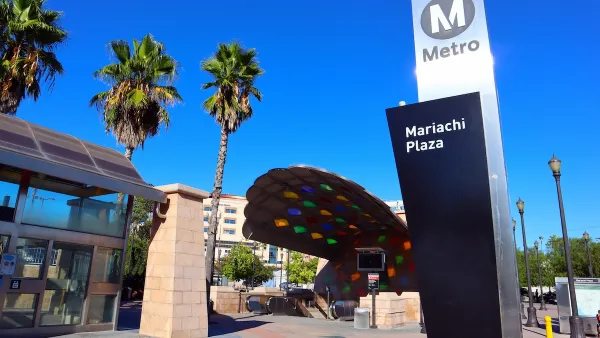Christine McLaren considers the history of urban housing in Berlin, and reveals a long-defunct program designed to address a problem faced by countless communities today.
Often the central controversy surrounding modern revitalization projects, gentrification can sometimes appear to be a contemporary problem. But, as McLaren notes, the basic dilemma of displacement has its roots in historic trends from throughout the 20th century.
Berlin saw the construction of working class housing in droves at the turn of the 20th century. In the post-World War II era, however, conditions in these workers' quarters had declined well below modern standards of basic livability, McLaren explains. "No central heating, no showers, several apartments sharing one toilet. In the winter the pipes and the toilets would freeze and burst. And on top of all this, the apartments were cramped; it was not unusual for five people to share one room."
But when the state government pushed to demolish and rebuild these neighborhoods beginning in the 1950s, some communities protested, hoping to renovate rather than build from scratch. And so, in the 1970s, the government initiated programs to help fund that renovation. "But there was a catch: in order to receive the money to rebuild, property owners had a contractual obligation with the government to ensure that the apartments would remain open to and affordable for the previous tenants after the renovations."
And so communities hired mieterberateren, or rental advisors, to liaise between stakeholders to ensure that as the communities improved, they would remain affordable for their historical constituency.
"The most important thing for us was that, in principle, anyone who wanted to remain living there should have the opportunity to do so. It wasn't that no one from outside could come in, but it should be that the people who lived there had the opportunity to stay," said Hans-Günter Kleff, a former mieterberater.
"Kleff's job no longer exists," writes McLaren. "As the programs to retrofit the buildings slowly petered out, so too did the positions for the people in charge of managing them. That means that if prices go up in these buildings more than they are supposed to, there are fewer people poking around to find out about it."
FULL STORY: Meet the Mieterberater

Planetizen Federal Action Tracker
A weekly monitor of how Trump’s orders and actions are impacting planners and planning in America.

Chicago’s Ghost Rails
Just beneath the surface of the modern city lie the remnants of its expansive early 20th-century streetcar system.

San Antonio and Austin are Fusing Into one Massive Megaregion
The region spanning the two central Texas cities is growing fast, posing challenges for local infrastructure and water supplies.

Since Zion's Shuttles Went Electric “The Smog is Gone”
Visitors to Zion National Park can enjoy the canyon via the nation’s first fully electric park shuttle system.

Trump Distributing DOT Safety Funds at 1/10 Rate of Biden
Funds for Safe Streets and other transportation safety and equity programs are being held up by administrative reviews and conflicts with the Trump administration’s priorities.

German Cities Subsidize Taxis for Women Amid Wave of Violence
Free or low-cost taxi rides can help women navigate cities more safely, but critics say the programs don't address the root causes of violence against women.
Urban Design for Planners 1: Software Tools
This six-course series explores essential urban design concepts using open source software and equips planners with the tools they need to participate fully in the urban design process.
Planning for Universal Design
Learn the tools for implementing Universal Design in planning regulations.
planning NEXT
Appalachian Highlands Housing Partners
Mpact (founded as Rail~Volution)
City of Camden Redevelopment Agency
City of Astoria
City of Portland
City of Laramie





























